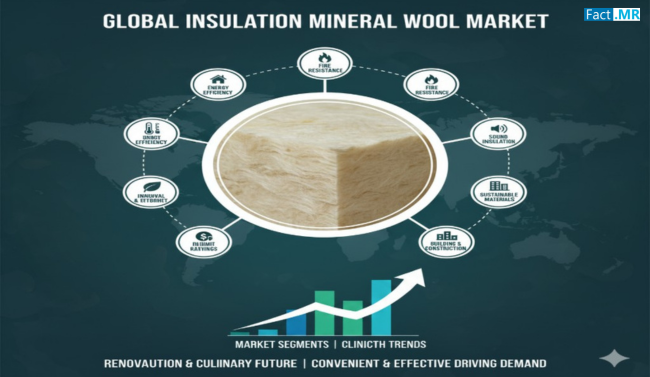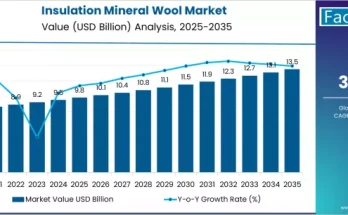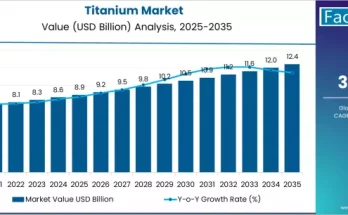The insulation mineral wool market is gaining momentum as industries and homeowners increasingly focus on energy efficiency, fire safety, and acoustic comfort. Mineral wool, composed of natural or manmade minerals and metal oxides, serves as an effective insulation material in residential, commercial, and industrial applications. Its ability to retain heat, resist fire, and reduce noise makes it a preferred choice for modern construction projects.
Market Overview:
Insulation mineral wool is available in various forms, including glass wool, rock wool, and ceramic fibers, each tailored for specific applications. Its low thermal conductivity and open-cell structure provide excellent insulation performance. The material can be installed in roofs, walls, and lofts, helping maintain indoor temperature while reducing energy consumption. Additionally, hydrophobic additives are often incorporated to minimize moisture absorption, preserving the thermal efficiency of the material.
Regional Insights:
North America leads the adoption of insulation mineral wool, driven by a focus on energy-efficient building codes, retrofitting initiatives, and robust construction activity. Europe follows, with regulatory directives emphasizing fire safety and energy conservation in residential and commercial buildings. The Asia-Pacific region, particularly China and India, is experiencing rapid urbanization and industrial growth, making it a key market for insulation mineral wool. Government programs supporting infrastructure renovation and sustainable construction further boost adoption in these regions.
Key Trends & Forecast:
- Sustainability and Eco-Friendly Materials:There is a growing emphasis on environmentally friendly insulation options. Manufacturers are investing in recyclable and low-impact materials to meet regulatory and consumer demands.
- Fire-Resistant and Lightweight Insulation:The demand for fire-resistant, durable, and lightweight insulation solutions continues to rise, especially in urban areas prone to fire hazards.
- Acoustic Insulation for Industrial and Automotive Applications:Noise reduction is a major driver, particularly in the automotive and industrial sectors. Mineral wool provides effective soundproofing, enhancing comfort and safety.
- Technological Advancements in Material Design:Continuous innovation in fiber orientation, density, and composition has enhanced the thermal, mechanical, and acoustic properties of mineral wool.
Applications & End-Use Outlook:
Insulation mineral wool finds applications across multiple sectors:
- Building & Construction:Used in walls, roofs, and attics, mineral wool helps maintain energy-efficient indoor environments while providing fire protection and soundproofing.
- Industrial:Large-scale facilities and factories rely on mineral wool for thermal management and acoustic control in production areas.
- Automotive & Transportation:Mineral wool improves passenger comfort by reducing road and engine noise, while also contributing to heat management in vehicles.
- Marine and Defense Applications:Its thermal and acoustic properties are beneficial in ships, offshore platforms, and defense installations.
Opportunities in Emerging Markets:
Emerging economies such as China and India present significant growth potential for mineral wool insulation. Rapid urbanization, industrialization, and government initiatives for sustainable construction have created high demand. Lower production costs in these regions also provide opportunities for international manufacturers to expand operations and establish a strong regional presence.
Challenges & Market Restraints:
Despite the strong growth prospects, the market faces challenges:
- Health Concerns:Exposure to mineral wool fibers during manufacturing or installation may cause respiratory issues, creating health-related regulations and safety concerns.
- Competition from Alternative Materials:Affordable and eco-friendly alternatives, such as cellulose-based insulation, are gaining traction, potentially limiting market expansion.
- Installation Complexity:Proper installation requires technical expertise, which can increase costs and affect adoption rates in certain regions.
Country-wise Insights:
China is emerging as a key market due to rapid construction activity and urbanization. Government programs aimed at upgrading infrastructure and promoting energy-efficient building practices are driving demand for insulation mineral wool. In the United States, demand is fueled by new housing projects and retrofitting initiatives to improve energy efficiency. The United Kingdom and other European countries continue to adopt insulation solutions in line with directives like the Energy Performance of Buildings Directive (EPBD), emphasizing sustainability and carbon emission reduction.
Conclusion:
The insulation mineral wool market is poised for continued growth as energy efficiency, fire safety, and acoustic comfort remain top priorities in construction and industrial applications. Its versatility, sustainability, and thermal performance make it an indispensable material in modern infrastructure development. Manufacturers and stakeholders who invest in innovation, eco-friendly solutions, and emerging markets are well-positioned to benefit from the expanding demand for insulation mineral wool globally.



